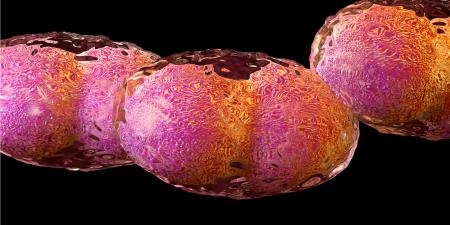The federal government is currently considering legislation which calls for the clarification of food labels, requiring that the 8 main food allergens be identified by their common names and the food allergens in additives be disclosed.1
- Approximately 7 million Americans suffer from food allergies; 30,000 people receive emergency treatment due to ingestion of a food allergen and an estimated 150 people die each year from anaphylactic shock.2
- Ninety percent of all allergic reactions are caused by 8 major foods—milk, egg, fish, crustaceans, tree nuts, wheat, peanuts, and soybeans.2
- An FDA study has shown that fewer than 1 in 10 parents restricting milk from their allergic child's diet were able to correctly recognize milk on the label. Milk can be labeled as whey, casein, and lactoglobulin.3
- Albumin, semolina, and vegetable protein concentrate are terms used for eggs, wheat, and soy, respectively.
- Hidden sources of the top food allergens:
- Some brands of canned tuna fish contain casein, a milk protein.
- Influenza vaccines are grown on egg embryos and may consist of a small amount of egg protein.
- Steak sauces and Worcestershire sauce contain anchovies.
- Tree nuts are found in many foods including barbecue sauce, cereals, crackers, and ice cream.
- At least one brand of hot dogs and one brand of ice cream also contain wheat.
- Several baked goods, canned tuna, cereal, crackers, and soups consist of soybeans.
- There is no regulatory definition for the term "dairy-free," which means that products marked "dairy-free" may contain milk proteins that are hazardous for people with a milk allergy. FDA regulations allow the use of caseinates (casein is one of the major milk allergens) in "non-dairy" products.4
- In 2000 the number of food recalls because of unlabeled food allergens rose to 121 from about 35 a decade earlier.2
- An FDA study found that one-quarter of all food manufacturers do not list ingredients that cause potentially fatal allergic reactions.3
- Forty-seven percent of manufacturers do not check their products to ensure that all ingredients are accurately portrayed on labels.3
The Senate bill S. 2499, the Food Allergen Consumer Protection Act, was introduced into the Senate on May 9, 2002 and is still being revised. To support this bill contact your representatives and let them know the importance food label clarification for American consumers. Please be specific and tell them about your experiences with and opinions on today's food labeling standards.
References
-
User-friendly food labels. The New York Times. July 16, 2002:A16.
-
S 2499 Food Allergen Consumer Protection Act. Thomas Legislative Information on the Internet. Available at: http://thomas.loc.gov/. August 16, 2002.
-
Food labels identify allergens more clearly. US Food and Drug Administration. http://www.fda.gov/fdac/features/2006/206_foodlabels.html. January 30, 2009.
-
Hahn M, Taylor S. Dairy-free and non-dairy: what do these terms mean for milk-allergic consumers? Food Allergy Research & Resource Program Information Library. Available at: http://www.farrp.org/articles/dairyfree.htm. Accessed August 9, 2002.



